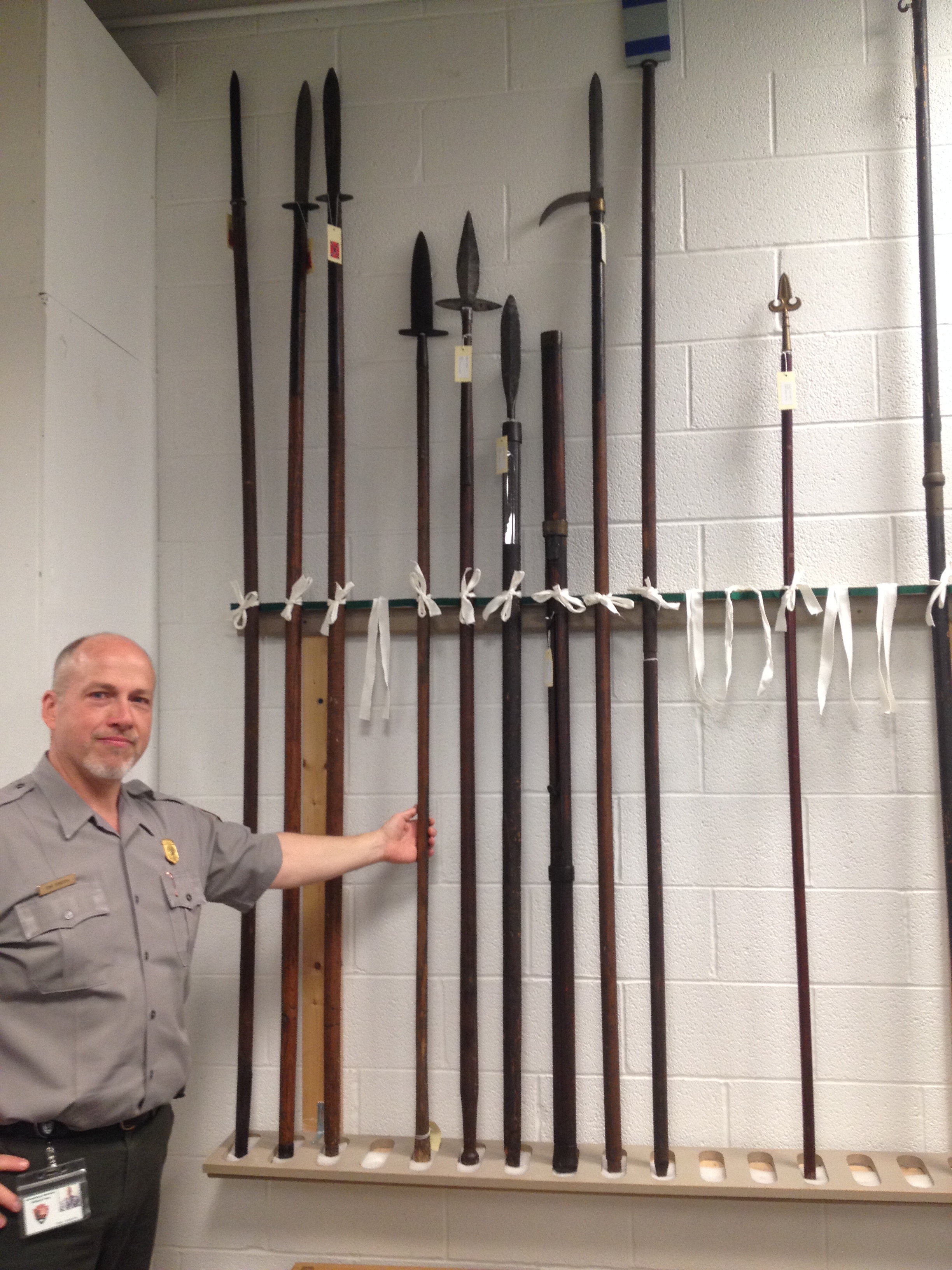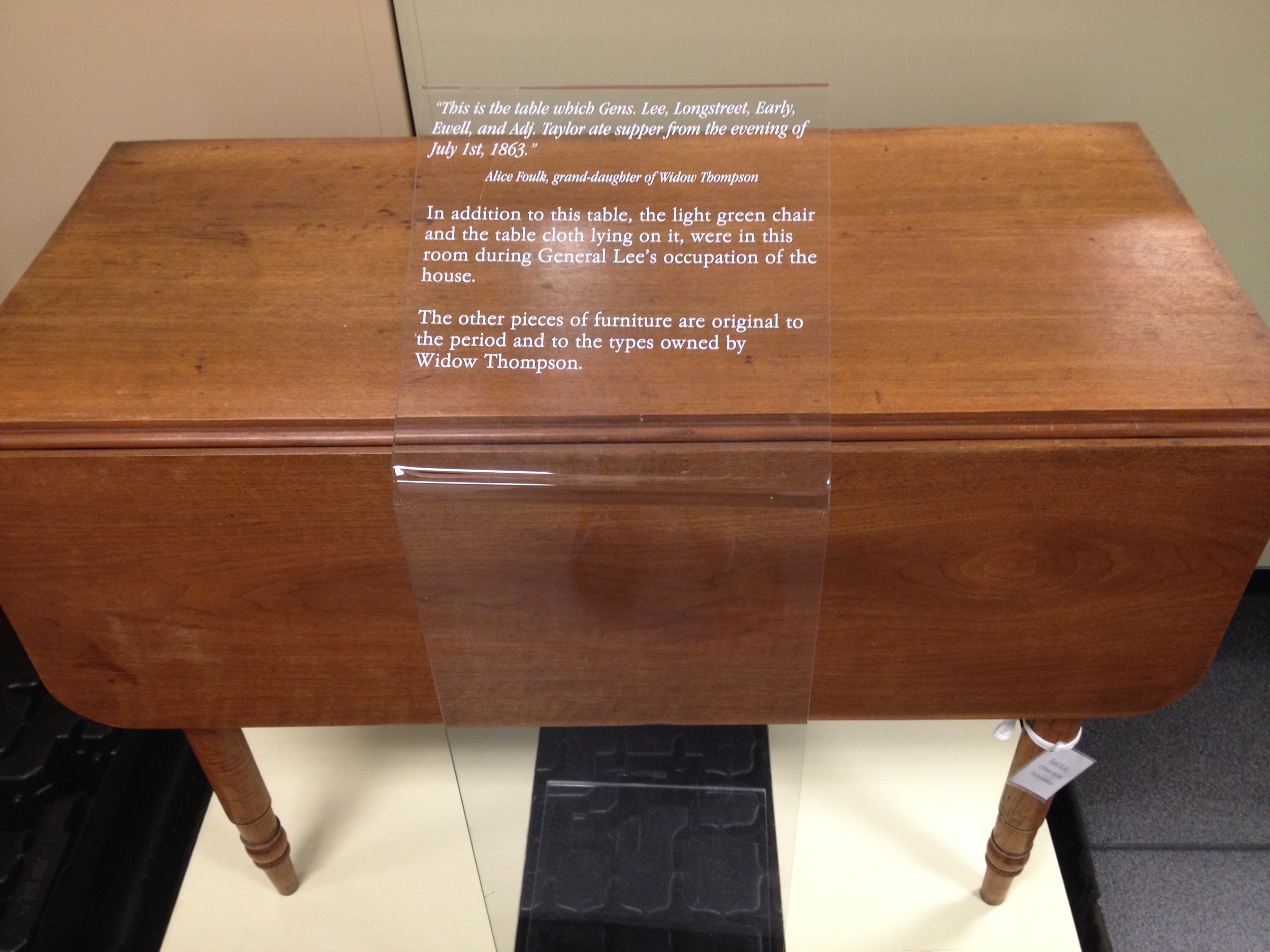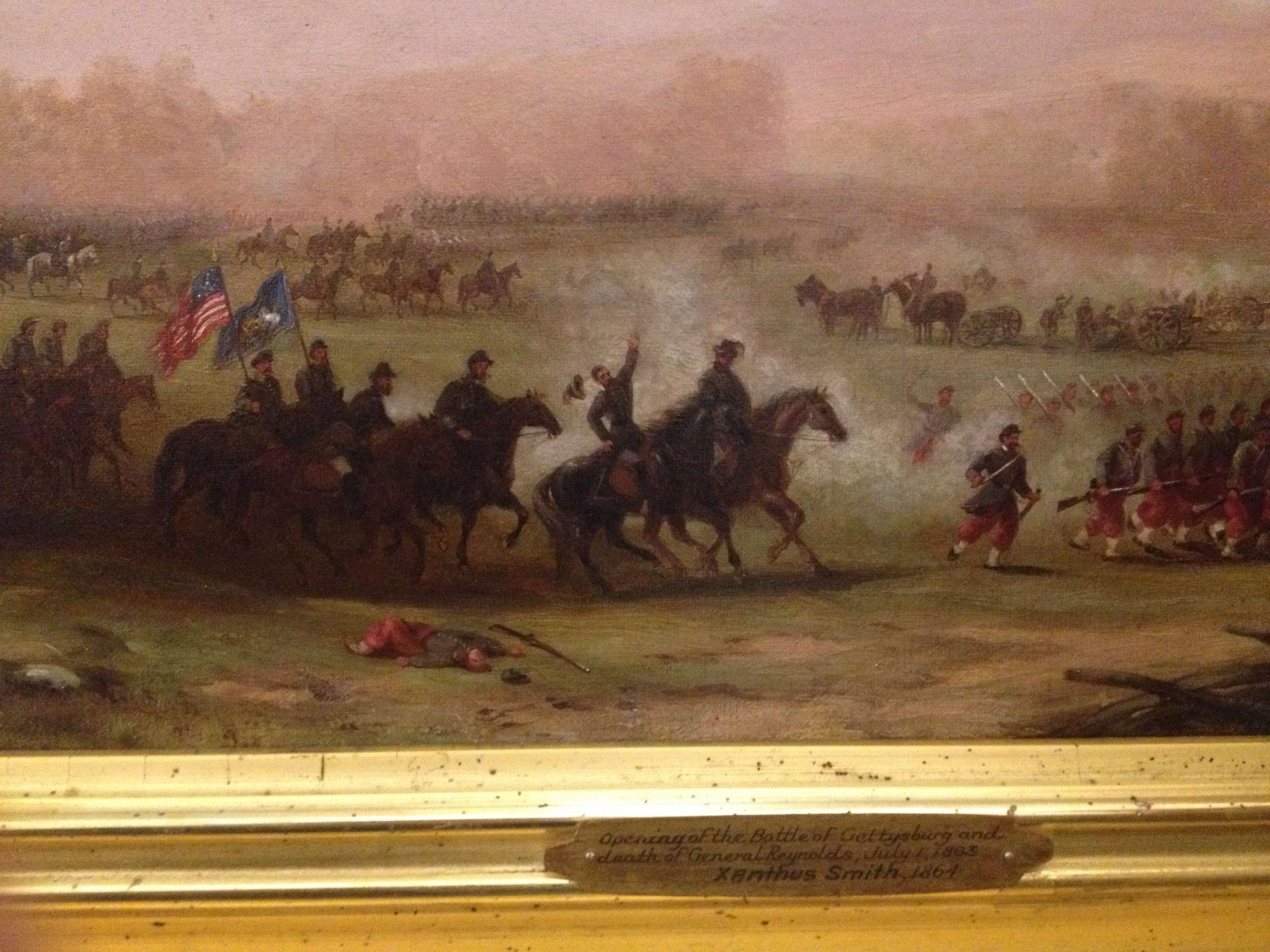Here we are on the train from Philadelphia airport to go to downtown. So excited that Tanya from the National Arts Parks Foundation has set us up for an adventure to meet with the Gettysburg Foundation and the Gettysburg National Military Park for a possible art collaboration in the future. We did not know what to expect, so we decided to ride the wave to what it might bring us as an incredible adventure. I must say, coming from Seattle, it was so refreshing to see that culturally, the city of Philadelphia and the people on the train were so mixed wow! and it felt like "now I am in real America..! " -Crow
After a late night drive from the Philadelphia airport we arrived at a very patriotic hotel with carpets like this. With Lincoln portrait paintings every where.
Here, our chihuahua Mondo also had to strike a pose!
We drove late night to a hotel with rent-a car and it was off to Gettysburg early the next morning. We had an appointment in the Gettysburg museum with Tom Forsythe who was our host. Our schedule was beautifully orchestrated by him every day of the time we were there. Tom is the Deputy Superintendent of Gettysburg National Military Park. It felt appropriate to have this blurry photo as he was always on the go from the start, he is a very warm, charismatic and engaging and passionate about the stories he shared with us. Being from the South, he has a very interesting perspective on the place, on the relationship between the North and South and how perceptions have changed over time. He shared his personal stories with us which gave us many new angles to think about and explore. We have spent a lot of time exploring peoples personal stories in our recent projects. As a country we still have so little understanding between the North and South.
THIS!! was the beautiful and spectacular CYCLORAMA PAINTING a 360 degrees painting in the museum that was activated by light and sound and a historical sequence of the civil war story told as you walk around and see the highlighted and detailed paintings. There are only few of these glorious and gigantic paintings left in the United States and the world..
"The painting is the work of French artist Paul Dominique Philippoteaux. It depicts Pickett's Charge, the failed infantry assault that was the climax of the Battle of Gettysburg. The painting is a cyclorama, a type of 360° cylindrical painting. The intended effect is to immerse the viewer in the scene being depicted, often with the addition of foreground models and life-sized replicas to enhance the illusion. Among the sites documented in the painting are Cemetery Ridge, the Angle, and the "High-water mark of the Confederacy". The completed original painting was 22 feet (6.7 m) high and 279 feet (85 m) in circumference.[3] The version that hangs in Gettysburg, a recent (2005) restoration of the version created for Boston, is 42 feet (13 m) high and 377 feet (115 m) in circumference."
And then we met with Sue Boardman – a licensed guide and historian who wrote a book on the Cyclorama.
The mood of the day completely changed. She took us on a moment by moment, move by move, blow by blow account of the three day battle of Gettysburg. Taking us to each of the sites allowing us to view each event from different vantage points. The initial surprise sneak made by the Confederates behind the Blue Ridge Mountains, approaching Gettysburg from the North. The Union finally getting word and beginning to move forces to the area. The Confederates swarming to the edge of the town and pushing the Union through town and into the hills beyond town. We traced all of the movements, all of the cannon lines and tragic mass deaths. The Union soldiers who ran out of ammunition and their commander ordered them to run into a line of Confederate soldiers with their bayonets. The final mishap by General Lee which resulted in thousands of his troops piling up dead upon dead on the fences. At the start of the tour it felt lighthearted and entertaining. But as it wore on, the places, events, people, men, grass, trees and rocks became imbued with those fleeting horrific three days and all of the groans and cries and tears and bone shattering cannons and futile running across an open field directly into the face of death.
We were so curious about what drives the historians that work day in and day out at the Battlefield. What brought them there? Below is a lovely mini interview with author Sue Boardman on the story of what brought her there and what keeps her there. We asked her to explain how she came to work at and love Gettysburg. CLICK BELOW FOR HER WORDS:
Sue Boardman who is an author of the book The Battle of Gettysburg Cyclorama.
We are struck by the ceremony of remembrance here. The marking of lines. The tracing of steps. The calling out of names. The regiments from New York, Philadelphia, Minnesota for the Union. Alabama, Virginia, Mississippi for the Confederacy. Just groups of friends and neighbors led by moneyed sponsors who had the cash for guns and the thirst for fame and a passion for an ideal and their homeland.
The effort to preserve this place, regulating stands of trees, lines of sight, tracing, re-tracing, telling and retelling. Keeping the memory alive in every detail. Repeated and iconographized. And I wonder what we are actually doing. And I wonder if we are getting lost in the details? Are we so obsessed with form, that we lose the very moment we are attempting to immortalize?
The Gettysburg Museum has a collection of 1.5 MILLION objects connected to the Battle and the war. The Journals of fallen soldiers, uniforms, weapons, a baby cradle that was left behind after its owners fled with their baby in their arms. General Lee's flag that was left behind. They even have John Wilkes Boothe's jacket that he left at his girlfriends house the night before he assassinated Lincoln. The row upon row of guns, and the horrific exploding canon balls that as Tom described leave only a pair of boots and a red mist in their wake. We saw the legendary abolitionist John Brown's Pike that he used when attacking the Armory at Harper's Ferry.
A Witness tree
Tom Forsythe (deputy Superintendent) and Ed Clark (Superintendent) at the Armory
We spent some time with Ed Clark, Superintendent of the park. Ed had just returned from Japan for two weeks. He was being consulted by the Japanese Park system who are creating a National Park on the site of the Last Samurai Battle; The Satsuma Rebellion (1877) and taking inspiration from the Gettysburg National Park! Apparently the two distant civil war battles and political situations have much in common.
Witness Trees
We saw “witness tress”. Trees who have stood witness to the war and are still living. Their witness is one devoid of black and white, of Union and Confederate, of hero and victim. A tree that witnessed great human tragedy.
At a monument we create icons and heroes and statues. But the true moment that was had is gone forever. Reflecting on the ceremony of remembrance. Of this retracing of steps. Of reliving for generations. Hidden under all of the facts and figures, monuments and enactments perhaps there is a ceremony. A collective processing of a terrible moment in time.
We were given the beautiful Sherfy house on the Sherfy Farm to stay in for our three nights in Gettysburg. The family farm was at ground zero during the battle.
The Sherfy's walls are filled with Bullet holes that go through the bathroom doors and the bedroom walls.
Little Round Top
The GB Parks caretakers feel that there could be many more stories told to a much broader audience. Their interest in bringing artists to the park is inspired by this desire for more perspectives. The questions that came to our minds; Is there room for more stories? Are they comfortable with the messiness of opening up the current narrative to new perspectives? What kinds of stories would be revealed? How will this place resonate to people from different communities, demographics and generations?
Starting to think about how a project might start to take shape here. Beginning the phase of research and dreaming. We were wondering what the soldiers were really thinking about. We say they "died for" various things. But what was really on the minds of each of those men. Just as a random exploration, we went online and collected a bunch of civil war letters in text and created a WORD CLOUD out of them. What can we find in common with many letters. what words bubble up to the top? In this word cloud, the more common the word, the larger it appears on this graphic. So many ways to dig for larger patterns.
A word cloud created from a dozen or so random civil war letters. Each time we tried this the word "HOME" is always big.
























